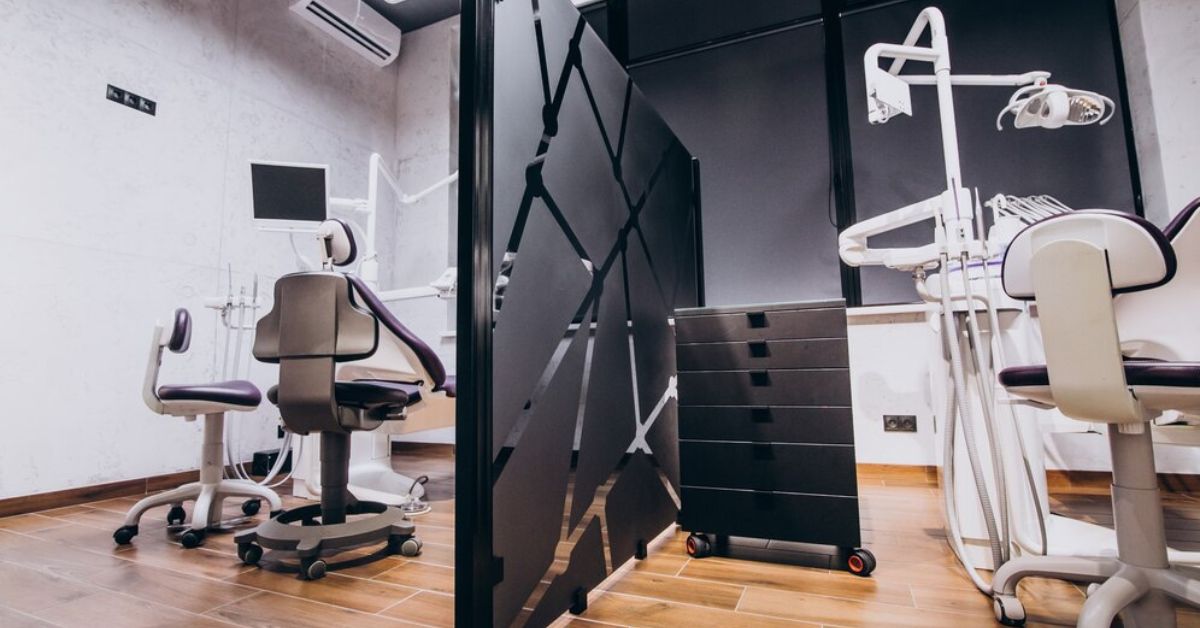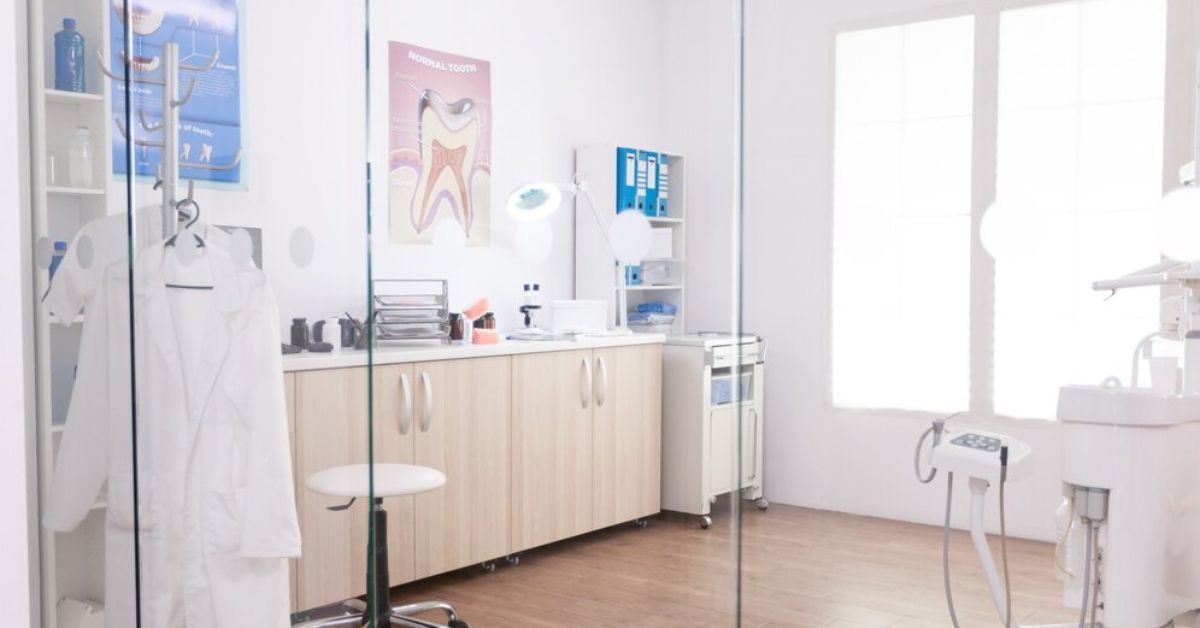
Modern Clinic Interior Design: Creating A Healing Environment For Patients
The design of a clinic significantly impacts patient experience and the overall effectiveness of healthcare services. A well-designed clinic is not only functional for staff but also creates a supportive environment for patients, promoting healing and well-being. This blog explores how modern Clinic Interior Design can enhance patient satisfaction, reduce anxiety, and contribute to faster recovery times. By examining key elements such as color schemes, lighting, furniture, materials, and the integration of biophilic design, we highlight the importance of creating a healing environment that benefits both patients and healthcare providers.
The Role of Interior Design in Healthcare
Compliance with sanitation standards and creating cozy conditions matter in a clinic context. That is why, the design of healthcare spaces has been demonstrated to impact the perception of the patients, decrease anxiety as well as contribute to recovery times. A clean and well-laid-out clinic is something the patient would not necessarily notice in detail but can improve their perception of the clinic. Further, the layout of any building offering services can enhance the productivity of employees and write the general output of the service.
Key Elements of Modern Clinic Interior Design
Colour Schemes: Applying colour at the clinic is not just a question of taste, it has psychological connotations as if used in the clinic design. Subdued natural tones which include blue, green, and pastel are some of the palettes artists often use to minimise any distraction to persons using the hall. These colours can make patients feel comfortable because they lessen stress and anxiety levels during their visit. Decoration with straight lines and solid, light colours should also be avoided in patient areas because these may cause excessive stimulation.
Lighting: Lighting is a critical aspect of clinic interior design. Natural light is highly beneficial as it helps create a more inviting and comfortable atmosphere. Large windows and skylights can be used to maximise natural light. In areas where natural light is not possible, the use of soft, warm artificial lighting can help mimic its effects. Proper lighting can also improve mood and energy levels in both patients and staff.
Furniture and Layout: The choice of furniture and the overall layout of the clinic are vital for ensuring comfort and functionality. Ergonomic and comfortable furniture can make waiting areas more pleasant for patients. The layout should facilitate easy movement and access, reducing the feeling of congestion and making the clinic more navigable. Clear signage and logical flow from the reception to consultation rooms help minimise patient confusion and stress.
Materials and Textures: Using non-toxic, durable, and easy-to-clean materials is essential in a healthcare setting. Materials that promote cleanliness and hygiene, such as antimicrobial surfaces, are highly recommended. Incorporating different textures can also contribute to a calming atmosphere. For example, wooden accents can add warmth, while soft fabrics in upholstery can provide comfort.

Creating a Healing Environment
Biophilic Design: Biophilic design involves integrating natural elements into the built environment to promote well-being. Incorporating plants, natural light, and water features can significantly enhance the healing environment of a clinic. Plants not only improve air quality but also have a calming effect on patients and staff. Natural elements create a connection to the outdoors, which can reduce stress and improve mental health.
Art and Decor Tactics:People’s creativity and adorning pieces are not mere embellishments in healing environments; they have a critical purpose. On this basis, it is possible to state that selecting artwork that is relaxing and fulfilling will help evoke the patients’ improved mood and mental conditions. There is a lot to be said about art created with an emphasis on nature though it must be admitted that nature-related artwork may be exceptionally well-suited for the purpose. They have to be home-like so that the patients feel comfortable and warm and also to get fresh, inspiring, and positive feelings.
Sound Management:Noise can be a significant stressor in a healthcare setting. Managing sound levels through the use of sound-absorbing materials, such as acoustic panels and carpets, can create a quieter and more peaceful environment. Soft background music in waiting areas can also help mask unpleasant noises and create a more relaxing atmosphere.
Technology Integration
Smart Design Solutions: Integrating technology into clinic design can enhance both patient experience and operational efficiency. Automated check-in kiosks, digital signage, and smart lighting systems can streamline processes and reduce wait times. Technology can also provide interactive elements that engage patients, such as touchscreens with health information or entertainment options.
Telehealth Spaces: With the rise of telehealth, it is essential to design areas specifically for virtual consultations. These spaces should ensure privacy and comfort, with appropriate lighting and soundproofing to facilitate clear communication. Providing a dedicated area for telehealth services can make the experience more professional and comfortable for both patients and healthcare providers.
Case Studies and Examples
To better understand the effectiveness of Clinic interior design, let us go through some examples of good clinic interior designs. A good example is that of the paediatric clinic that decided on the use of visually child-appealing and vibrant colours plus the strategic placement of information displaying kiosks. Another example is a dental office that changes the environment by painting it colours that possess a calming effect, having natural lighting and comfortable chairs to ease patients’ anxiety. Through these issues, one can focus on the aspects of design that make the patient experience more enjoyable and satisfactory.
Tips for Implementing Modern Clinic Interior Design
Implementing a modern interior design in a clinic doesn't have to be overwhelming or expensive. Here are some practical tips:
- Start with a Plan: Develop a comprehensive design plan that considers the needs of patients, staff, and the specific services offered.
- Budget Wisely: Prioritize key elements that will have the most significant impact, such as lighting, furniture, and materials. Look for cost-effective solutions that do not compromise on quality.
- Seek Professional Help: Consider hiring a professional interior designer who specialises in healthcare environments. They can provide valuable insights and ensure that the design meets all regulatory standar.
- Involve Staff: : Get input from staff members who will be using the space daily. Their feedback can help identify practical needs and improve the overall design.
- Focus on Cleanliness: Choose materials and finishes that are easy to clean and maintain to ensure a hygienic environment.
- Stay Flexible: Design with adaptability in mind, allowing for future changes and updates as needed.

Conclusion:
At Interiors by AD, we understand that modern clinic interior design is essential for creating a supportive and healing environment for patients. Thoughtful design choices in color schemes, lighting, furniture, materials, and biophilic elements can significantly enhance patient experience and well-being. By integrating smart technology and adhering to best practices, clinics can become more functional, efficient, and welcoming spaces.
If you are looking for a clinic interior designer in Faridabad, trust Interiors by ADto bring innovative and patient-centred design solutions to your healthcare facility. Investing in superior interior design is a step towards better healthcare and patient satisfaction.


